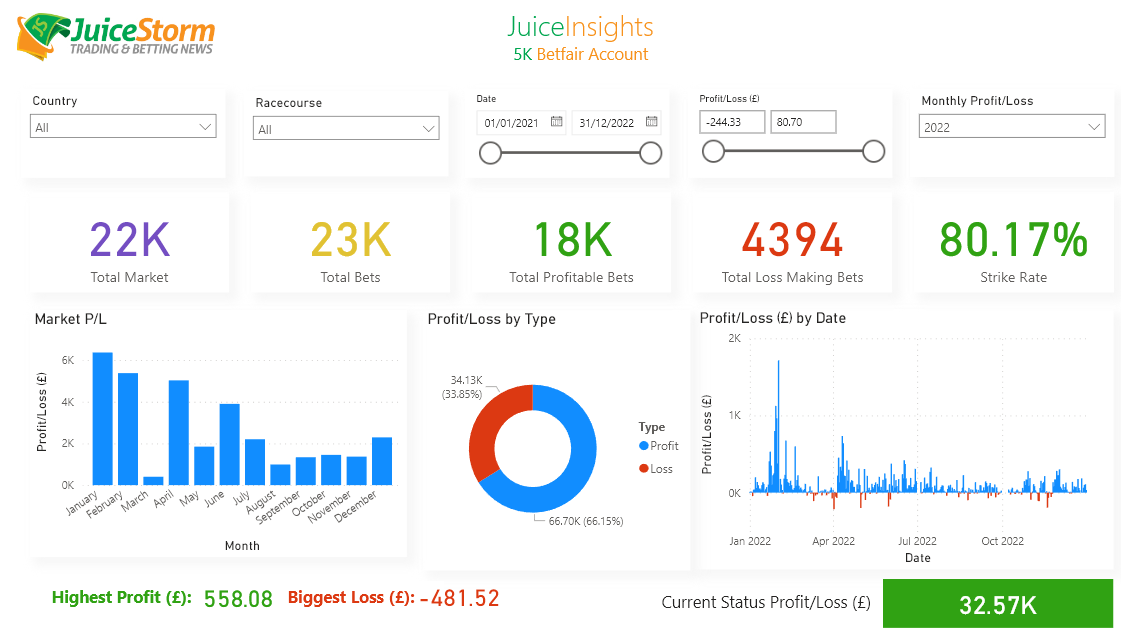How to read Racing Form
If you are interested in picking winners for yourself rather than using someone else’s system, you need to learn how to read and interpret racing form. Trawling through form is a long and laborious process, and after several years of doing it myself I came to the conclusion that there must be better ways of picking winners. There are just so many variables.
For those interested in learning what it all means, here is an attempt to describe it.
The 2 pictures above show the form from the racing post for 2 horses from a flat handicap for apprentices at Wolverhampton (left) and a novice chase at Bangor (right). There are pages and pages of this sort of thing in the Racing Post every day.
Some of this information is a repeat of that printed in the racecard. At the start of the form for a race you have the race information – time, distance, race type and class, prize money and number of runners. Each runner is then listed with its allotted weight, age and pedigree information, trainer and jockey and lifetime form summary. Details of any previous wins are given. The last 3 races or so for each horse are then described in detail. The print is quite small and there is a huge amount of information crammed into it.
Looking at Cyril The Squirrel in the first race, you can see that he carries 9st 7lb. This is the weight the handicapper has given him in this race – he will actually carry 9st 2lb because his jockey, apprentice Lewis Walsh, is entitled to claim 5lb for his inexperience. The age of the horse will have been taken into account by the handicapper – a very young horse (eg a 3 year old) would be given a weight allowance. The pedigree gives information about the likely suitability for the race, although by the time the horse is 7 years old this is really much less relevant than the horse’s own form. Pedigrees are interesting when assessing the chances of young or unraced horses, in particular whether they are sprinters or stayers, prefer all weather or turf and flat or jumps, but this is far from foolproof. Triple Grand National winner Red Rum was bred to be a 5 furlong sprinter on the flat. Trainer and jockey information can also be useful in this context – some trainers are better at getting horses fit for their first race than others, and the booking of a top jockey for a stable he does not normally ride for can be a pointer worth noting.
Returning to Cyril the Squirrel, his lifetime form figures are listed (older races may be omitted if there are too many of them) with the usual format for bold type for all weather and ordinary type for turf. Most of this horse’s runs are on all weather, as is today’s race. His latest start was in December, and the season finishes at the end of December, so the form ends with “-“. Because this is a flat race the draw is given – this can be very important over short distances on some tracks such as Chester and Sandown.
The OR figure is important. This is the official rating for this horse, and determines the weight he carries relative to the other horses in the race. Every time a horse races this figure is assessed and altered if necessary. This rating also determines which races the horse can run in. This race is for horses rated 0-65, and Cyril the Squirrel is rated 63. Horses rated near the top of a ratings “band” like this will get to race when they are entered, but will carry high weights. Horses rated just above a band, eg 66, will have trouble getting a race if the races they would run in are popular. This becomes a serious problem in some circumstances, and can lead to trainers attempting to manipulate ratings by running the horse under unsuitable conditions in order to lower its rating. You can see that Lord Lansing, running in the same race, has the same rating and is therefore carrying the same weight.
The summary of races is self explanatory, and the wins are listed below this. These are in the format:
Official rating for that race, month/year, track, distance, class, rating band, race type, going (ground conditions), race value. You can see that Cyril the Squirrel has won twice at Wolverhampton over a slightly shorter distance than today’s 1m1.5f. A furlong is 1/8th of a mile.
Underneath the win information is a summary of the horse’s performance on different types of going, today’s course and distance, and type of track. These are in the form of number of wins, number of places, number of runs, so for example Cyril the Squirrel has run 12 times on a left handed track, winning 3 and placing 3. He has run 3 times right handed without any wins or places, 6 times at Wolverhampton, winning 2 and placing once, etc.
After this each of the last 3 races the horse has run in is analyzed in detail:
Date, track, distance, class of race, type of race, prize money.
Number of runners, going, time and how this compares to the standard. A fast time indicates a good horse, firm ground or a following wind, a slow time may indicate nothing more than a slow pace.
Basic information is given for the winner and placed horses, with details for today’s runner highlighted in capitals:
Place, name, age, weight, jockey, draw, odds. Note that Cyril the Squirrel became a 7 year old on 1st January, the day all racehorses have their official birthday.
Detailed comments are then given of how the race unfolded for the horse concerned. Reading the comments for Cyril the Squirrel’s last race, you get the impression that the horse was unlucky not to finish at least 2nd.
The 3 figures in brackets are the Racing Post’s interpretation of the form, a speed figure based on the race time, and the official rating of the horse for the purpose of determining its weight for this race. Note that Cyril the Squirrel was rated 60 for his last run, 59 for his previous 2nd place and 55 for his win 3 runs ago. The handicapper has increased his rating to 63 today – this is normal for a horse which has run so well in its recent races.
op 4/1 means that when the betting opened at the track the price of this horse was 4/1.
Below this are the distances between the horses at the end of the race, the ratings of the first 3 horses home by the Racing Post (not the official ratings), and the Racecheck – the number horses which ran in this race to have run again and won (individual number in brackets), been placed and unplaced – completes the data for the race.
Looking at Lord Lansing’s latest run you will see that there are 2 horses in capitals. The other one, Kammamuri, is also running again today. This gives form students a direct line between the two horses.
In his recent race Lord Lansing was 4th and beat Kammamuri by 3/4 length into 5th. Kammamuri was “giving” 3lb to Lord Lansing, ie he was carrying 3lb more. Today Kammamuri carries 9st 6lb and Lord Lansing 9st 7lb, so Kammamuri has a “4lb pull in the weights” (he is 4lb better off with Lord Lansing). This race is over 1m1.5f, and over this distance 1 length is worth about 1.5lb. If all else is equal (it rarely is exactly) I would expect Kammamuri to reverse the placings with lord Lansing at the revised weights, and this did in fact happen – Cyril The Squirrel won the race, beating Kammamuri into 2nd, with Lord Lansing 4th beaten a further 3/4 length. This does not always happen, but it is an excellent example of how people calculate which horse is likely to win. Quite often there is no direct form link between some of the horses, but horse A may have beaten a horse which has also run against horse B. Increasingly complicated calculations of “collateral form” can be performed to try to rank the horses into a likely finishing order. I prefer to take the fluctuations in official rating and the distances the horses have won or been beaten by as sufficient for my purposes.
The form sample from the novice chase illustrates a couple of additional factors. For jump racing there may be more than one official rating, OR being the one that refers to the current type of race, in this case a chase. The hurdles rating is denoted with H, and any flat rating by F. The 3 different ratings can vary hugely as some horses are much better suited by hurdles than fences or vice versa. Because the weights carried in jump races are higher, the ratings are correspondingly bigger than for flat races.
This race is not a handicap, but these horses are carrying different weights. This is because Wymott has won more chase races than Bouggler, and there are weight penalties for previous wins, the actual penalty depending on the class of race won. This can get quite complicated, especially when the weight allowances for young horses, female horses and inexperienced jockeys also need to be factored in. All that is really important is the relative weights in the race compared with previous form.
From the hurdles ratings you can see that Bouggler and Wymott were of the same ability over hurdles. At today’s weights you would expect Bouggler to win, but he is less experienced over fences (he hasn’t yet earned a chase rating). The market disagreed with this assessment and Wymott was backed down to 8/13 fav, and duly beat Bouggler by 10 lengths. There are times when the money speaks louder than the form.
Once you have worked out the relative merits of the horses, there are plenty of other factors you can incorporate. There are tables of trainers and jockeys in form and what percentage of winners they have had recently at the track concerned, there is the distance the horses have travelled to the races and for flat races the effect of the draw. You can delve into the intricacies of the way the race is likely to be run and which horses that will suit. There is so much information that the only certainty is that you will not have time to study it all in depth before the races are run.
Nowadays in my opinion the most important factor is one which does not even appear in the paper at all, and that is the movement of the odds during the day. Not all horses which shorten in price win, and not all horses which drift lose, but the odds are as good an indicator of what is likely to happen as anything you can work out for yourself. There is nothing more infuriating than spending ages working out the form for a race to see your selected horse finish 2nd to one which you had dismissed as having no chance on form, but which has been backed down from double figure odds to favourite. It happens remarkably often.






Comments are closed, but trackbacks and pingbacks are open.